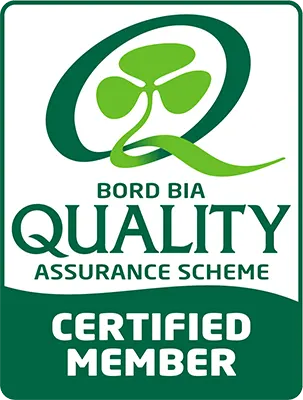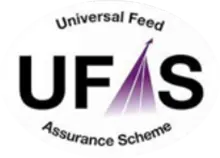Making silage is one of the biggest investments you make for your herd. Every tonne of silage represents hours of planning, work, and financial investment. But without the right tools in place—like effective silage additives—even well-made silage can spoil and lose feed value.
Whether you’re feeding out maize, grass, wholecrop, or a combination, now is the time to take control of your silage quality. Heating, moulding, and reduced feed value are common problems when silage isn’t treated or managed properly. The good news? These losses can be avoided.
Why Silage Additives Are Essential
Feeding poor-quality silage doesn’t just lead to reduced intakes or slower growth rates. It can severely impact your herd’s health and performance, with consequences ranging from nutrient loss and mycotoxins to costly feed replacements and long-term profitability issues.
Silage additives are your first line of defence. Products like MAGNIVA Platinum Grass Dry, MAGNIVA Platinum Grass Wet and MAGNIVA Classic help reduce heating and spoilage, improve fermentation, and maintain silage quality throughout storage and feedout. When silage is treated with the right additive, it becomes more stable, palatable, and nutritionally valuable—resulting in higher intakes, better milk yields, and healthier animals.
The Hidden Cost of Feeding Spoiled Silage
Feeding silage that has heated or shows signs of moulding can lead to:
- Reduced intake: Cows avoid hot or mouldy feed, leading to inconsistent rations and reduced production.
- Loss of nutrients: Spoiled silage loses key nutrients like energy, protein, and vitamins—short-changing your herd.
- Increased replacement costs: You may need to supplement with costly concentrates or alternative feeds.
- Mycotoxin risk: Mould can introduce harmful toxins, impacting fertility, immunity, and performance.
- Wasted time: Sorting, removing, and replacing spoiled feed wastes valuable labour hours.
Poor silage doesn’t just hurt performance—it erodes the return on your silage investment and undermines the work put into growing, harvesting, and storing quality forage.
When Are Additives Most Needed?
Additives aren’t just for worst-case scenarios. They’re a proactive tool to protect your investment — especially in these common conditions:
- Unsettled Weather – Wet or dry grass increases the risk of poor fermentation. Additives help compensate and stabilise.
- Lower Grass Sugars – Later cuts or stemmy grass can struggle to ferment. Inoculants like Magniva deliver stronger fermentation, even when sugars are low.
- Extended Storage Plans – If you’re clamping silage for months, additives reduce reheating and spoilage when the clamp is opened.
- High-Value Feed Requirements – If you’re aiming to improve milk yield or finishing weights, additives help preserve the energy and protein that deliver results.
Five Steps to Safeguard Silage Quality and Animal Performance
It’s not too late to take control. By following these proven best practices alongside the use of a silage additive, you can protect both your cows and your profitability:
1. Harvest at the Correct Dry Matter (DM) and Chop Length (CL)
Cutting your forage at the right DM and CL is essential for making stable, high-quality silage. Ideal dry matter supports proper fermentation, while correct chop length helps with compaction and feed-out consistency. Test in the field and adjust harvesting practices accordingly.
2. Compact Silage Well in the Pit or Silo
Proper compaction removes oxygen, reducing the chance of spoilage organisms like mould and yeast developing. Investing time in achieving good density during packing will preserve the nutritional value and stability of your silage.
3. Seal the Pit Effectively
Use high-quality plastic sheets or oxygen barrier films to tightly seal the pit. Pay attention to edges and walls—these are the areas most vulnerable to air ingress and spoilage. A well-sealed pit is critical for fermentation and feed-out quality.
4. Always Use a Proven Silage Additive
This step is non-negotiable if you want to maintain high feed value and prevent heating or spoilage. Additives like MAGNIVA Platinum Grass Dray and MAGNIVA Platinum Grass Wet and MAGNIVA Classic promote rapid, efficient fermentation and improve aerobic stability once the pit is opened. They help lock in nutrients, improve palatability, and protect your herd’s performance.
5. Monitor for Heating and Mould Throughout Feedout
Keep a close eye on the silage face, surface, and edges during feedout. Check temperatures regularly and remove any visibly mouldy silage before feeding. Early action prevents bigger issues and helps ensure cows continue to consume high-quality forage.
Plan Ahead to Protect Feed Value
Don’t let a season’s worth of hard work go to waste. The combination of smart silage-making practices and targeted additives ensures your herd receives a consistent, high-quality ration that supports health, production, and profitability.
If you’ve already ensiled grass, wholecrop, or maize, it’s not too late to act. Silage additives can still make a major difference when used at feedout or for future cuts. Talk to our team for tailored advice on how to protect your feed value and performance this winter.
Contact Specialist Nutrition today to get the right additive for your crop and feeding system—and maximise the value of every tonne of silage.





